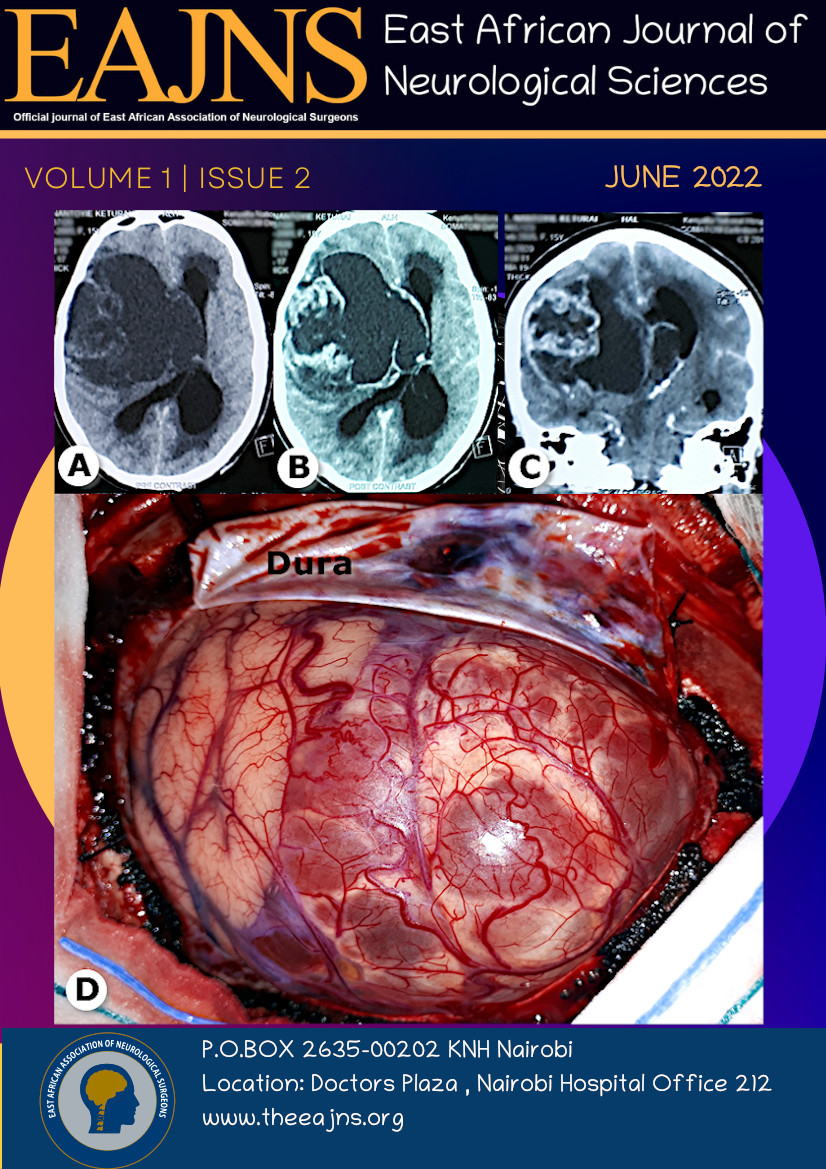Main Article Content
Association between Serum Potassium Ion Abnormalities and Clinico-Radiologic Parameters in Severe Traumatic Brain Injury
Abstract
Background: Severe Traumatic Brain Injury, is a major cause of mortality and disability worldwide. Inflammatory and biochemical cascades initiated by the primary injury insult to the brain lead to electrolyte dysfunctions that contribute to secondary brain injury. This study aimed at determining the incidence of serum potassium ion abnormalities and their association with specific clinical and radiologic parameters. Methodology: This was a prospective cross-sectional study of 117 patients with severe head injury admitted in our hospital between November 2019 and February 2020. Data collected included patient demographics, mechanisms of injury, prehospital interventions, clinical examination findings, CT Scan head findings, serum potassium ion levels (at admission and 48hrs later), and outcome (30 days). The data gathered was entered into the Statistical Package for Social Sciences for analysis. Results: Hypokalemia was the most common potassium ion abnormality, noted in 25(21.4%) and 21(23.9%) of cases at admission and 48hrs post-admission assays respectively. Hypokalemia was associated with the presence of epidural hematoma (p=0.005) while increased pulse rate (p=0.007) and traumatic SAH (p=0.045) were mainly seen in patients with hyperkalemia. Hypokalemia was associated with significantly increased risk of mortality OR 4.12(95% CI: 1.14-14.83, p=0.031) and OR 5.12 (95% CI: 1.08-24.25, p=0.039) at admission and 48hrs post-admission respectively. Conclusion: Hypokalemia is the commonest potassium ion abnormality seen in severe head injury, and is associated with significant increased risk of mortality.







